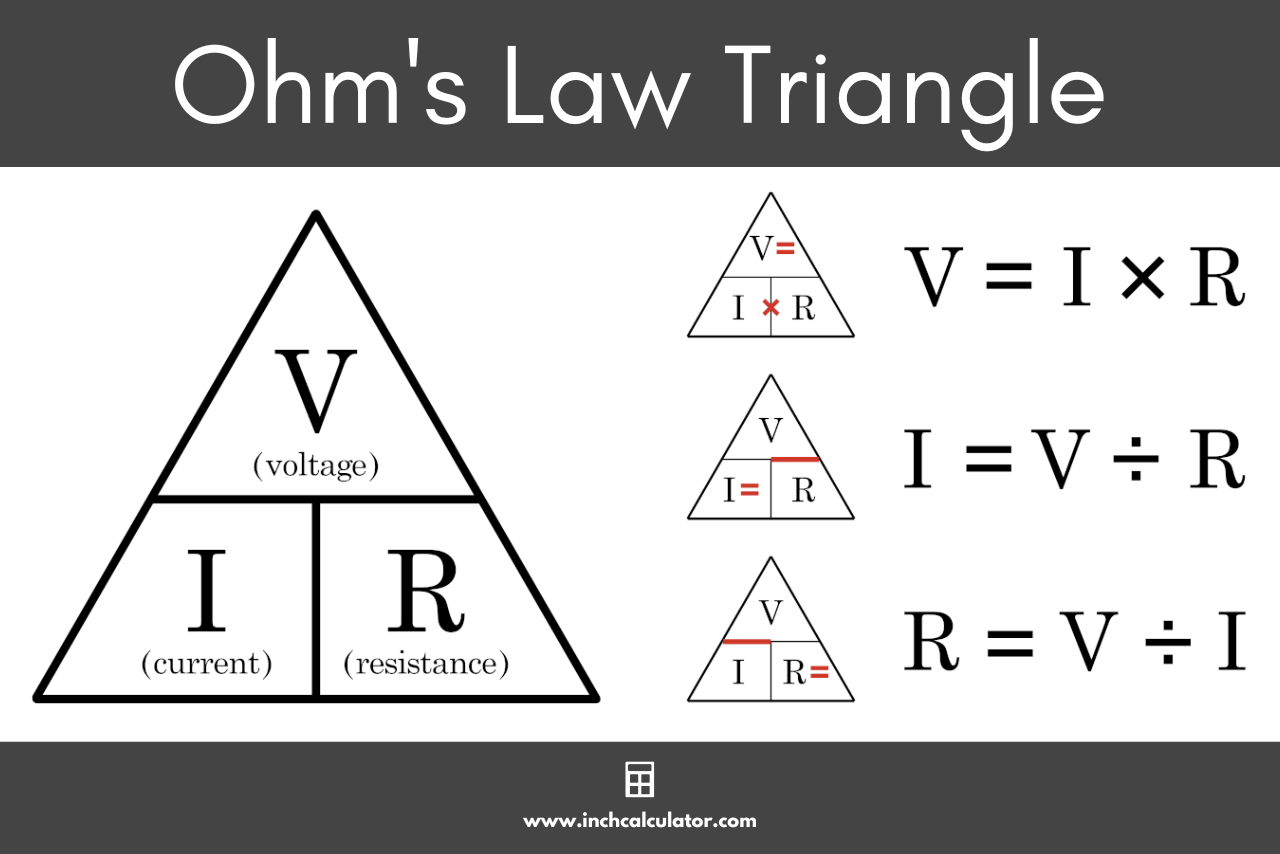Another way to express Ohm's Law is with triangle charts like this one,
| E |
| I l R |
Meaning that,
If I (amps) increases ▲then E (volts) will increase ▲because they are directly proportional. (▲▲)
If I increases ▲then R (resistance) will decrease▼because they are inversely proportional. (▲▼)
Likewise;
If I (amps) decreases ▼then E (volts) will decrease▼because they are directly proportional. (▼▼)
If I decreases ▼then R (resistance) will increase▲because they are inversely proportional. (▼▲)
The triangle chart helps to physically see the multiplication or division formula by covering up one of the 3 variables
.
To find E cover it with your finger to reveal the formula I x R or E is equal to I times R.
To find I cover it and reveal that I is equal to E divided by R.
Cover R and find R is equal to E divided by I.
Notice that the horizontal separator line (the left to right line like the horizon) is either a
mathematical line of division or an equal sign. The vertical (up and down) separator line is either a multiplier or an equal sign. So, when you cover the E, the horizontal line becomes an equal sign creating the formula;
E = I x R but not; E divided by I x R
This single triangle chart above is one of 4. It displays only 3 of the 12 formulas.
✦All 4 Triangle Charts✦
Here are the 4 separate triangle charts used to display all 12 of the Ohm's law formulas. Make a copy of them.If you memorize these 4 triangle charts you will know all 12 formulas by covering up one variable as mentioned in the example above;
E
______
I I R
E
I \ R reveals; (by covering the E) E = I x R
E E
I \ R now hide the I and reveal; I = R
E E
I \ R now hide the I and reveal; R = I
To get to the next chart, square the E and change I to P.
| E 2 |
| P l R |
E 2
E 2 E 2
P \ R cover the P and reveal; P = R
E 2 E 2
P \ R cover the R and reveal; R = P
To get to the next chart think "PIE"
P
I \ E
P P P
I \ E reveals; P = I x E and I = E and E = I
To get the next chart, square the I change E to R.
| P |
| I2 l R |
P P P
I2 \ R reveals; P = I2 x R and I2 = R and R = I2

No comments:
Post a Comment